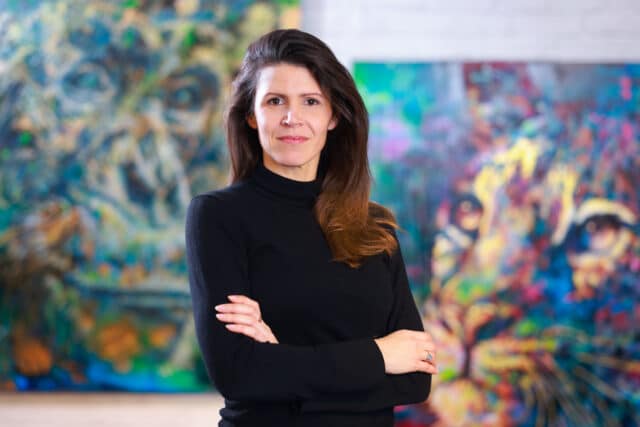
Internationally-acclaimed artist’s thirst for excellence
Cambridge alumna, qualified vet, Lynx helicopter commander in the British Army and now world-renowned, award-winning artist, Hannah has always followed her passions with a thirst for excellence in everything.
While at Bloxham she won the Junior Prizes for Physics, Chemistry and Spanish; the Senior Prizes for Chemistry and the Aubrey Deeley Biology prize. She was a 1st XI Hockey player, and captain of the Sailing and 1st VII Netball teams. She excelled in the Arts; not only in her paintings and sculptures but also as a Music Scholar, with three Grade 8s by the time she left for university. Hannah was the only successful Oxbridge candidate in her year, earning a place at Trinity Hall, Cambridge.
Having intercalated her pre-clinical veterinary studies with a Zoology Degree, in her third year Hannah elected not to continue on to clinical studies. Instead, she returned to the arts to establish a sculpture business. Having built a client base and secured multiple commissions, the business succumbed to the 2008 financial crisis and Hannah found herself needing regular employment… so she joined the Army.
After a year at the Royal Military Academy Sandhurst, Hannah commissioned into the Army Air Corps, and after a tour of Afghanistan with the Infantry, began the Army Pilots’ Course. She achieved the coveted ‘Wings’ brevet and converted onto the Lynx helicopter, completing multiple tours of Canada, Germany and Kenya supporting training exercises and conducting medical evacuation duties. Hannah’s final two years’ Regular service saw her teaching combat tactics at the Army Aviation Centre in Hampshire.
Throughout her Army career Hannah continued to pursue her art, gaining prestigious sculpture commissions for the Army, but it wasn’t until her MedEvac duties in Kenya in 2016 that her paintings began to draw a following. Her first exhibition of watercolours and sketches was hosted in Nanyuki, Kenya, and by the time Hannah left the Regular Army in 2018 she had developed a unique style and a demand for the work that convinced her to pursue the art career once again.
Since then, Hannah has become one of the most successful self-representing artists in the UK. Her collections of one-off, distinctive works have been sold to buyers from the UK, the USA, Europe, Australia and Singapore, and have been featured in the Financial Times ‘How to Spend It,’ Vogue and Country Life, among other luxury publications. Her work has raised almost £350,000 for charities including Help for Heroes, Born Free and Tusk, Prince William’s conservation charity, for which Hannah was appointed an ambassador in 2020.
What are your favourite school memories?
I loved Raymond House. I loved the family aspect of it: the common rooms, the tea-and-toast at break time and the sporting rivalries between the Houses. Even as day pupils we would stay until 9pm so my entire social life was based at school. I was shy and awkward when I joined, but the small numbers at Bloxham really brought me out of my shell.
What was special about Bloxham?
The all-encompassing nature of Bloxham. We had dinner, we did our prep, we socialised, we played sports. It enabled me to develop in a way that I hadn’t been able to at my previous school.
Do you have a favourite memory of school?
It was the little things. Staying up past bedtime in the common room to watch Graham Norton, the team hockey training on those cold, crisp afternoons, the Art School when it was quiet and cosy… and winning the House Shout competition whilst conducting the girls, dressed as a nun!
When you were at Bloxham you were the recipient of a Scholarship. How has that impacted you?
I was lucky enough to receive a 50% music scholarship to attend Bloxham, as well as the Pioneer Award which encouraged girls to come to Bloxham as it transferred to fully co-educational. This ultimately made it affordable for us as a family, especially as there were two of us. Without it, I’d never have been able to join. I feel like Bloxham was the making of me, and I try to give back in life wherever I can, whether that’s to conservation charities or to helping others succeed in their own journey.
Is there a place at Bloxham which is special to you?
The old Art Block. It is upstairs in the eaves of a lovely old building. A little place you could retreat to outside of lessons, that’s where I would spend quite a lot of my free time.
What A Levels did you choose, and which were most useful for your career?
I initially opted for Biology, Chemistry and Further Maths, having completed Maths a year early, but quickly swapped Further Maths for Art – an altogether more balanced approach. It’s difficult to quantify which have been most useful, as they have each contributed in some way to various aspects of my career. Art would be the most obvious choice, but without Maths I would not have managed the Pilots’ Course nor the budgeting and accounting aspects of my business. Without Biology and Chemistry, I wouldn’t have got into Vet School, which in turn has given me the most in-depth knowledge of anatomy which I have used extensively in my paintings and sculptures, so they have all had their uses.
In 2003’s Bloxhamist magazine, Martin Pye, Director of Art, saw beyond her first year A Level artistic talent and commented: “She was very focussed on anatomy in humans and horses. Her drawings and sculptures could give her a second career in becoming a vet.”
What attracted you to read veterinary science?
In hindsight, I know that my choice was a very naive one. I’d been a member of the Brownies, and,aged nine, whilst completing my ‘Animal Lovers’ badge, I decided I wanted to become a vet. From that point on I was ultra focused on gaining the right qualifications and experience for a place on the course, but without stopping to assess the ‘why?’. It wasn’t until my third year at Cambridge that I finally realised it wasn’t for me.
What drew you to the British Army? What was the toughest part of your training and why did you decide to pursue a career as a Lynx helicopter pilot?
Following the collapse of my sculpture business in 2008, I needed full-time employment. I had a choice to either head to London with my degree and get onto a corporate graduate scheme or do something completely alternative. There was an age limit on entering Sandhurst, so the option wouldn’t be open forever and I decided to go for it.
Sandhurst was by far the toughest part physically. The training is relentless and requires strength and endurance when hungry, cold and sleep deprived. But mentally and emotionally the Wings Course was definitely the most challenging. It was 18 months of constant tests. Every flight, even every pre-flight brief, was assessed, and we were all too aware of how quickly we could slip up and be kicked off the course, with nothing to show for it. This level of pressure was exhausting but made it even more rewarding when you’re finally standing on parade, receiving your Wings brevet. The relief was palpable!
As for why I chose to fly…it was because it looked REALLY cool, and it was! The Lynx is the fastest and most agile helicopter on the planet, and the most challenging flying was the most rewarding. Flying at night, on Night Vision Goggles (NVGs), at 10 feet, underneath the pylons… it was as exciting as it was scary. My most challenging flight came towards the end of my flying career when we were tasked to pick up a soldier who had been trampled by an elephant in Kenya. He was badly injured, the weather was appalling, it would require dust landings in the dead of night on NVGs, and I was commanding an aircraft with a very inexperienced pilot – not the ideal combination. But we did it, we saved a life, and we didn’t crash. All-in-all, a good day at the office!
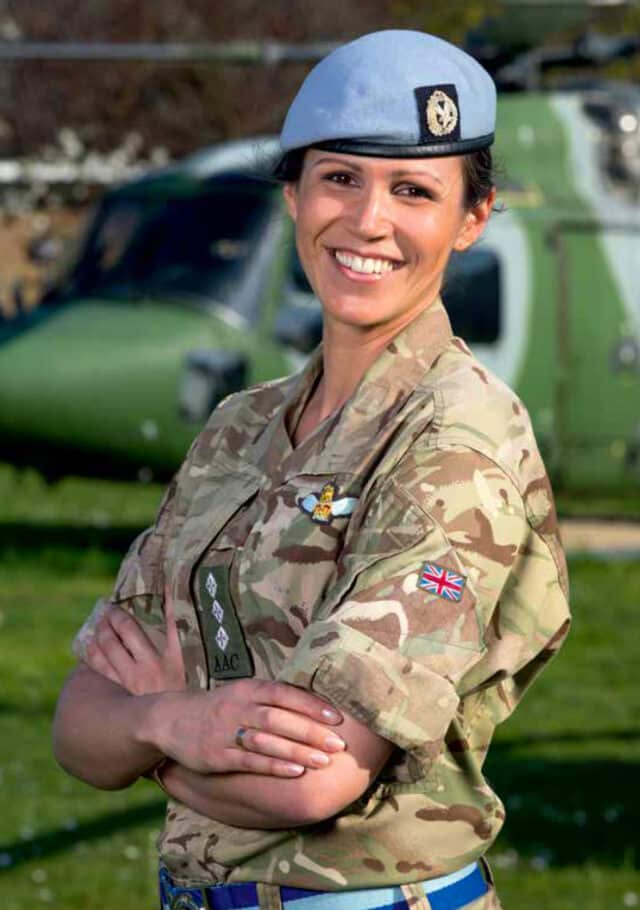
How was your love of art re-ignited while you were in the Army?
I used to paint and sketch whilst on standby for MedEvac duty, purely as a hobby. It was portable, quiet and required no power – perfect for when we were based up in the desert. And we were surrounded by the African wildlife that became the focus of future collections.
Tell us about your career in Art?
My art career developed when I still had an Army salary, so I had the freedom to create without the pressure of earning money. I was able to turn down commissions in favour of developing my own style through experimentation. Meanwhile, the skills I learned in the Army – planning, organisation, budgeting, management etc – meant that I could self-represent rather than rely on a gallery to exhibit my work. I now host huge shows in prestigious locations – high risk financially, but I don’t pay any gallery commissions, and I can be much more flexible and opportunistic with regard to my exhibitions. My next exhibition will return to The Mall in London in September 2025, taking over Mall Galleries for a 5-day solo exhibition in support of the charity Tusk. The panic is real, as the deposit is paid but the collection is not painted yet … no pressure.
Along the way I’ve been lucky enough to compete in the Sky Arts Portrait Artist of the Year competition in 2019 and travelled to Sydney as the UK Invictus Games team artist.
Do you have a favourite piece of your art, and why?
I have always had a soft spot for horses. Not only are they an incredible balance of grace and power, but they are also incredibly difficult to draw correctly. When a piece of horse art comes together and manages to capture the right energy and movement there’s a real satisfaction to it. “We Three Kings”, a giant painting that depicts three Gold Cup winning racehorses, is probably my favourite piece.
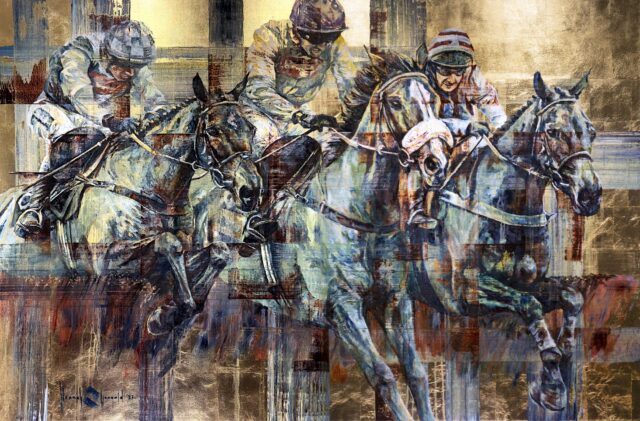
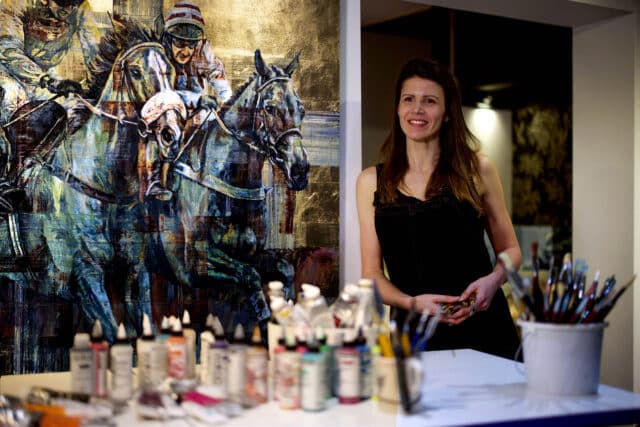
Tell us about your role as a Military Ski Leader?
As I was finishing my career in the Regular Army, I knew that I would continue in the Reserves (previously called the Territorial Army, or TA). I managed to get my ski instructor qualifications before I left and have continued to deliver ski training to various units as part of my Reserve service. It’s a challenging but hugely rewarding part of my life.
You have been involved with raising funds for the World Wildlife Fund, the Invictus Games and you are now an Ambassador for Tusk. Why is this important to you?
I’ll soon be passing the £350,000 mark for charitable donations, over £200,000 of which has been donated to Tusk. It has been a massive part of my business plan from the very beginning: I’ve always felt that the business is about more than just selling art and making money. I love the creative collaboration and the fact that the business can give back in such a significant way. I’m very careful when selecting who to partner with, and now that I’ve found Tusk, I really feel this is a charity that I will remain with for a long, long time. They are small, efficient, and humble, yet they fund some of the most significant conservation and community projects across Africa.
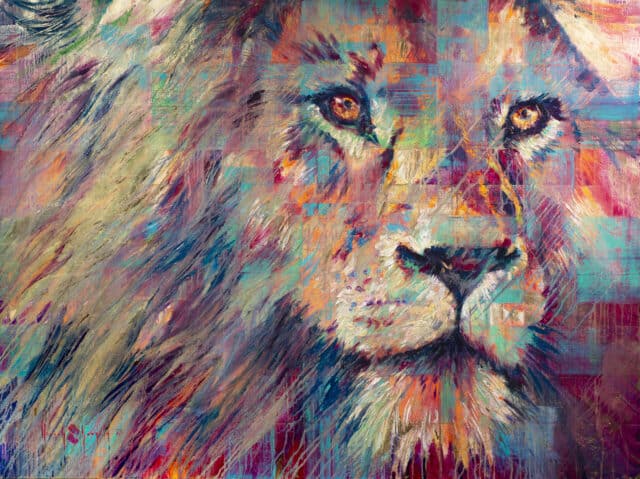
What is the professional achievement of which you are most proud?
There are plenty of moments that are up there in the rankings. Getting my degree from Cambridge, being awarded my Army Wings after such a long, touch course, and reaching my £100,000 fundraising target for Tusk in 2022… they’ve all felt incredible. But I think I’m probably most proud of the fact that I’ve been brave enough to change course when all the advice has been to stick with what I was doing. I have never regretted a single one of these changes, but I know I’d have regretted staying on a career path that I was no longer passionate about.
Where are you happiest?
I am always happiest when I’m immersed in nature. A cold, crisp, autumn walk with my dog, with time to stop and observe. So often it is the simplest pleasures. I’m equally content when I’m completely in ‘flow’ with a painting – I lose track of time and become completely engrossed.
What advice would you give to current students?
I left school ‘knowing’ EXACTLY what I wanted to do. I felt pretty smug about that and couldn’t really grasp why others hadn’t managed to figure their plans out yet. But my career path has ended up being more convoluted than the majority of my school friends – and that’s totally ok. My advice would be to be ‘ok’ with not knowing. Life has a way of presenting you with the most wonderful opportunities, you just need to be brave enough to throw everything into them.
Hannah’s next solo exhibition will take place at Mall Galleries on The Mall, London, opening on 30 September 2025. To view her work and to find out more about her artistic process and philanthropic endeavours, click here or visit Hannah’s Instagram page here.
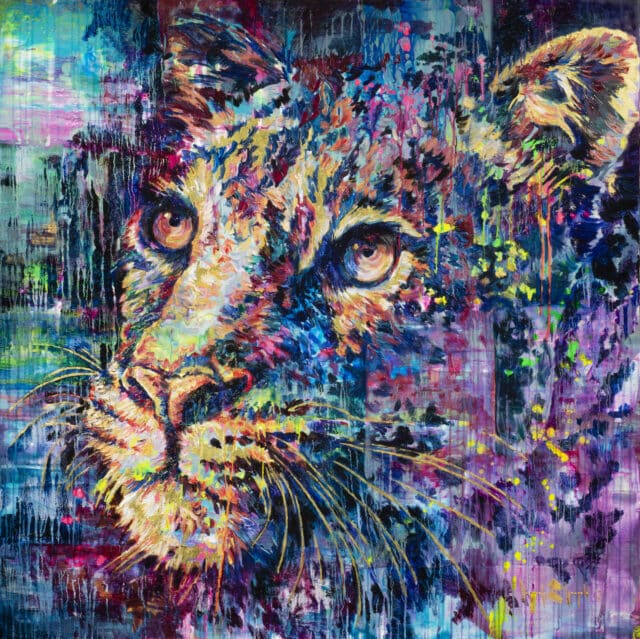
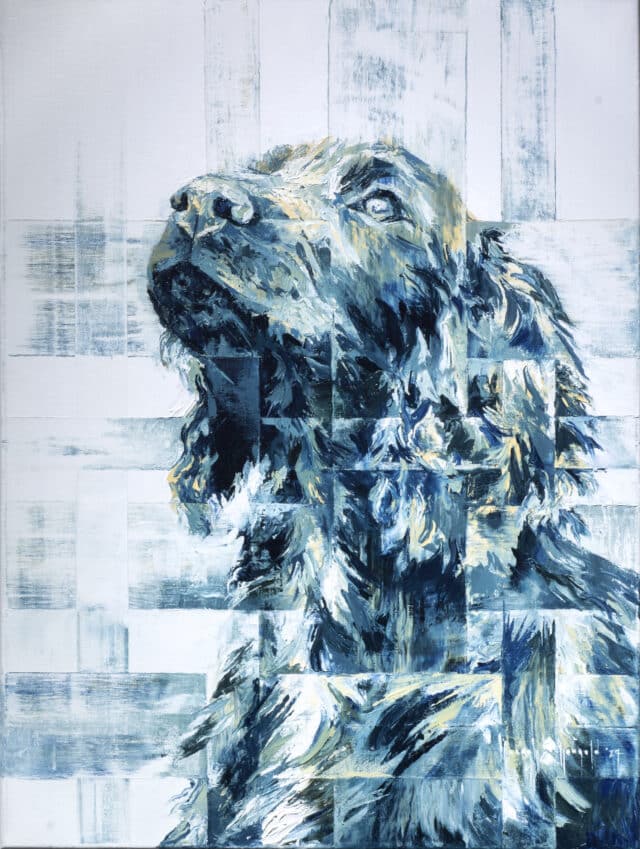
Back to all stories

